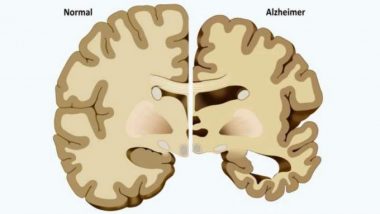A study that was published on Wednesday revealed that Eliminating dead-but-toxic cells that occur naturally in the brains could slow neuron damage and memory loss associated with the Alzheimer's of mice. It is designed to mimic Alzheimer's, according to a study. This could help researchers take another step towards the fight against dementia. Like earlier the 'zombie cells' cannot divide the healthy cells, however, it can still cause harm to them in a process called senescence. Herpes Virus May Raise Your Risk of Alzheimer's Disease, Says Study.
These dead-beat cells usually gather in the regions of the brain. They have been associated with old age diseases like osteoarthritis and atherosclerosis, Parkinson's and dementia. The elimination of senescent in ageing mice also showed to have extended their healthy lifespan, a prior research showed. World Alzheimer’s Day 2018: 5 Myths about The Commonest Form of Dementia.
A team led by Mayo Clinic's Tyler Bussian in Rochester, Minnesota experimented and used a mice that was genetically modified and produced the "destructive, cobweb-like tangles of tau protein that form in the neurons of Alzheimer's patients." They also programmed the mice to help remove of "zombie" cells in the same region.
A lot of harmless brain cells in the elderly often look like the dangerous senescent cells. A drug would target so the molecule would have to be good at telling the difference between the two. It is unfortunate that about seven per cent of the population over 65 suffer from Alzheimer's or another form of dementia. This could be able to bring the research a step higher. Skinny Fat People May Be At Risk of Alzheimer's Disease, Says Study.
(The above story first appeared on LatestLY on Sep 20, 2018 06:18 PM IST. For more news and updates on politics, world, sports, entertainment and lifestyle, log on to our website latestly.com).













 Quickly
Quickly




















